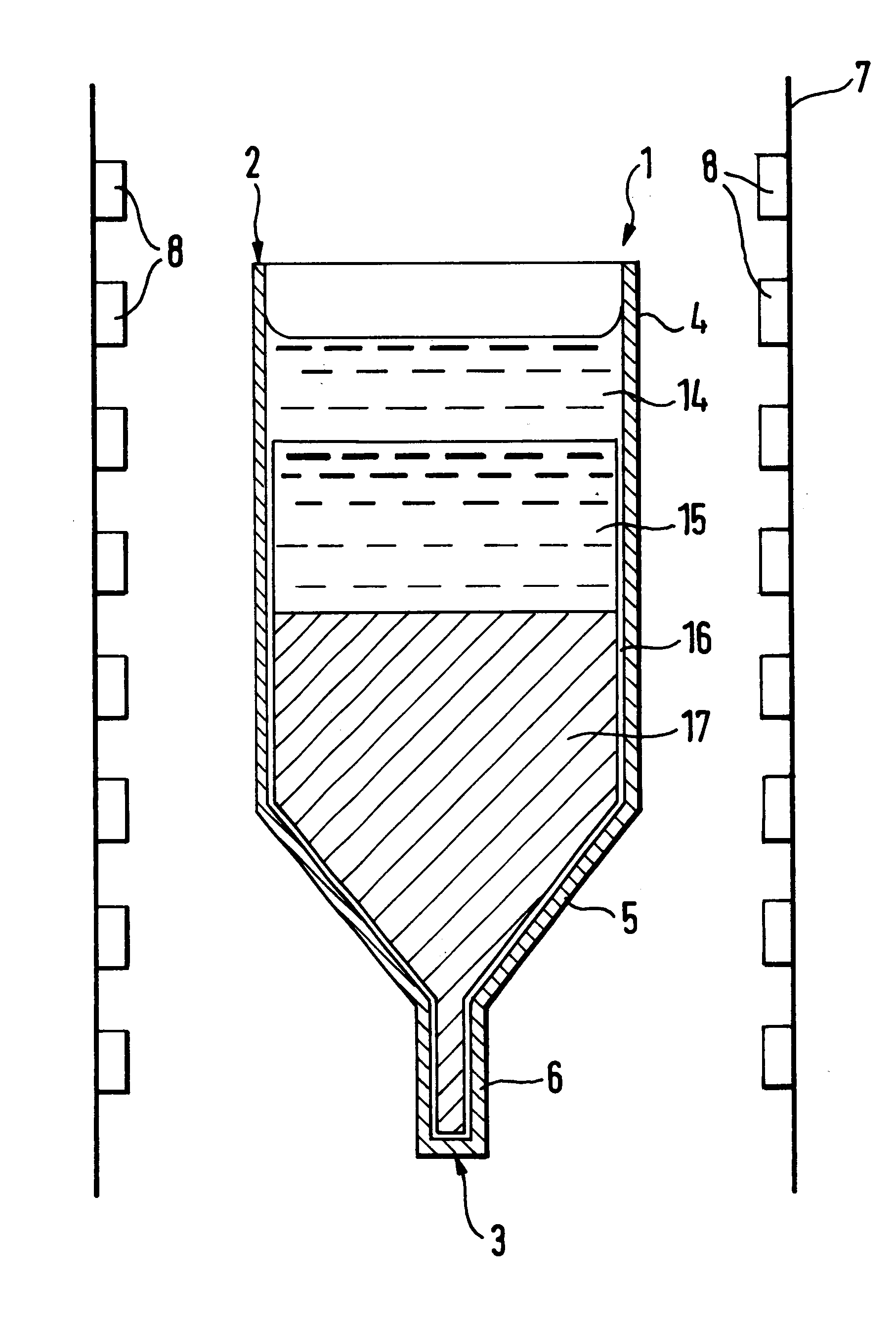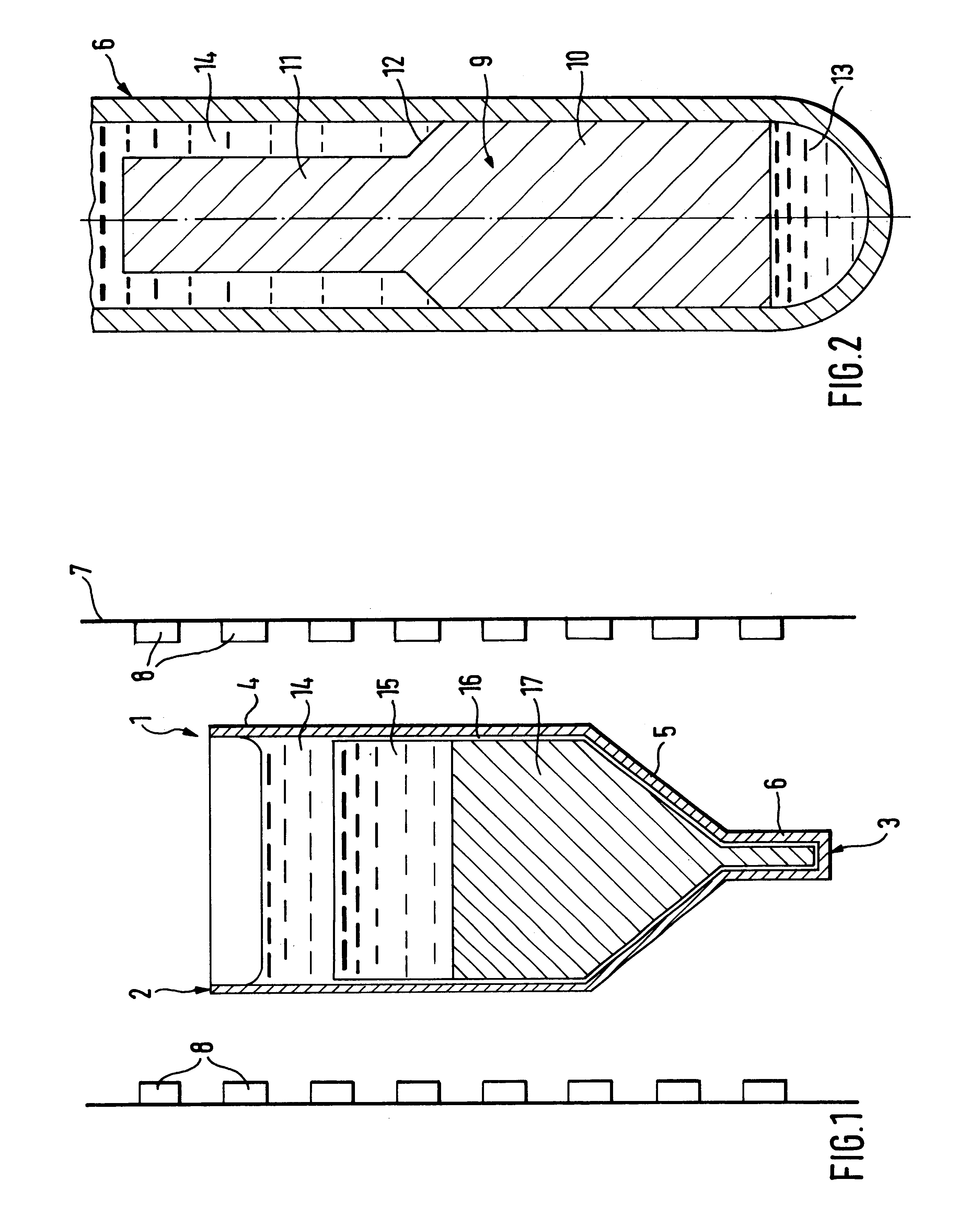Method and apparatus for producing monocrystals
a monocrystal and monocrystal technology, applied in the direction of chemistry apparatus and processes, crystal growth process, polycrystalline material growth, etc., can solve the problems of local deformation and destruction of the nucleus, total loss of the required product, uncertainty of the position of the nucleus, etc., and achieve the effect of simple manner and high quality
- Summary
- Abstract
- Description
- Claims
- Application Information
AI Technical Summary
Benefits of technology
Problems solved by technology
Method used
Image
Examples
Embodiment Construction
The apparatus comprises a crucible 1 having an upper edge 2 and a bottom end 3. The crucible further comprises a cylindrical first portion 4 having an inner diameter which corresponds to the diameter of the monocrystal to be grown and a length corresponding substantially to the length of the monocrystal to be grown. Adjacent to the first portion 4 the crucible 1 comprises a second portion 5 which conical tapers towards the bottom end 3 and forms a transition region of the crystal growth. Following the second portion 5 the crucible 1 comprises a third cylindrical portion 6 having a smaller inner diameter than the first portion 4 and a closed bottom. The third portion 6 forms the nucleus channel. The inner diameter of the nucleus channel is about 8 mm. Preferably, the crucible is a boron nitride crucible (BN-crucible) or a pyrolytic boron nitride crucible (pBN-crucible).
The crucible 1 is disposed in a furnace 7 which is schematically indicated in FIG. 1. The furnace 7 comprises a plur...
PUM
| Property | Measurement | Unit |
|---|---|---|
| inner diameter | aaaaa | aaaaa |
| length | aaaaa | aaaaa |
| diameter | aaaaa | aaaaa |
Abstract
Description
Claims
Application Information
 Login to View More
Login to View More - R&D
- Intellectual Property
- Life Sciences
- Materials
- Tech Scout
- Unparalleled Data Quality
- Higher Quality Content
- 60% Fewer Hallucinations
Browse by: Latest US Patents, China's latest patents, Technical Efficacy Thesaurus, Application Domain, Technology Topic, Popular Technical Reports.
© 2025 PatSnap. All rights reserved.Legal|Privacy policy|Modern Slavery Act Transparency Statement|Sitemap|About US| Contact US: help@patsnap.com


